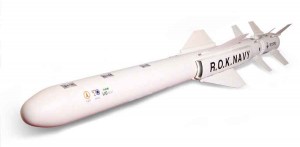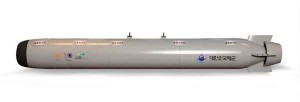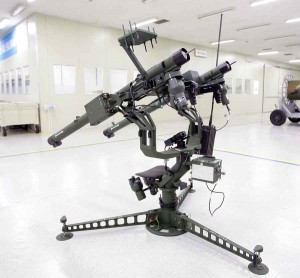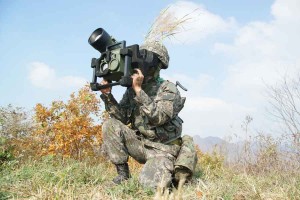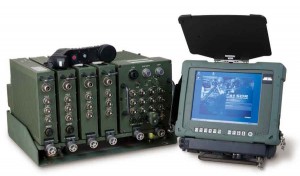LIG Nex1, one of the leading defense companies in Korea, will be participating in the upcoming ‘DEFEXPO India 2014’. The exhibition is expected to take place in Pragati Maidan in New Delhi for four days starting on February 6th. As LIG Nex1 aims to expand its reach into the Indian defense market, this will be their second participation in the DEFEXPO since 2012.
For DEFEXPO 2014, LIG Nex1 will display their state-of-the-art product including ship-to-ship missile ‘C-Star’, 3rd Generation Portable Anti-tank Guided missile ‘Raybolt’, portable surface-to-air missile ‘Chiron’, and light-weight torpedo ‘Blue Shark’.
‘DEFEXPO India’ has a relatively short history with its foundation traced back to 1997. But this biennial event, which encompasses Land, Naval & Internal Homeland Security solutions, has soon grown to be one of the most renowned exhibitions in Asian region. Now, the exhibition attracts more than 700 companies from 40 different countries. For DEFEXPO 2014, 9 of the Korean defense companies including LIG Nex1 will use this opportunity to introduce their latest product and initiate numerous business meetings with key delegations from India, and as well as other participating countries.
LIG Nex1 has been a leading pioneer in introducing the Korean defense product to the global market including the Arabian and Latin America regions. For DEFEXPO 2014, LIG Nex1 will display their state-of-the-art product including ship-to-ship missile ‘C-Star’, 3rd Generation Portable Anti-tank Guided missile ‘Raybolt’, portable surface-to-air missile ‘Chiron’, and light-weight torpedo ‘Blue Shark’.
Mr. Hyo Koo Lee, the CEO of LIG Nex1, has expressed his strong commitment towards the Indian market. “It is true that we [the Korean defense industry] still have a long way to go. But it is also true that we’ve been very successful in our previous attempts to develop the most sophisticated defense product. I strongly believe that we are now ready to take our next step and expand our presence in the Indian market.”
C-Star: ship-to-ship missile
The C-Star is a ship-to-ship guided missile developed jointly by the Agency for Defense Development and LIG Nex1 with the latest available technology.
The missile is capable of neutralizing enemy ships from outside range of enemy attacks. The C-Star boasts superior hit probability in live fire tests, including RIMPAC, the world’s largest international naval training. The C-Star has an equal or superior performance compared to the conventional anti-ship missiles
The C-Star is a completely automated ship-to-ship missile which cruises at optimum altitudes and flight paths. The missile is incorporated with various maneuvers such as sea skimming, way points, and pop-up attack to ensure guaranteed hit. Also, the state-of-the-art Electronic Counter Countermeasure is applied to the missile to increase survivability.
Blue Shark: light weight torpedo
The Blue Shark is a light-weight torpedo that has been operated by the Korean naval forces since 2005. The indigenously developed light-weight torpedo is known to have an equal or superior performance compared to the conventional torpedoes and has proven its value in enhancing the Korean Navy’s ASW (Anti-Submarine Warfare) capability.
The Blue Shark can be launched from surface ship, ASW helicopter, and maritime patrol aircraft (P-3C). Once launched, the torpedo transmits acoustic wave to detect, track and engage hostile underwater target. The active sonar used in the torpedo is known to have the highest detection range by using the sophisticated beam steering technology. Also, the directional warhead guarantees the torpedo to penetrate a steel plate with 1.5m thickness, and other sophisticated technologies were applied to enhance the hit probability. Especially, the Blue Shark is the first and only torpedo in the world that incorporated rechargeable Lithium Polymer battery, where the previously known issues of the conventional batteries were solved. Moreover, the warhead can be easily exchanged with the training warhead, which end-users may find it useful for their training purposes.
Combined with the cutting-edge-technology, the indigenously developed light-weight torpedo The Blue Shark is one of the most effective measures to deter hostile underwater threats.
Chiron: portable surface-to-air missile
Chiron is a Korea’s indigenously developed portable surface-to-air missile. Combined with the Korea’s cutting-edge technology, the missile ensures superior accuracy, stability, and mobility, marking it as one of the invaluable assets.
The Chiron’s maximum range extends to seven kilometers. This portable guided missile can neutralize aircrafts and helicopters at an altitude up to 3.5 kilometers at athe speed of Mach 2.0. It provides close air defense against hostile aerial threat such as aircrafts, helicopters, and unmanned aerial vehicle infiltrating at low altitudes.
The guided missile weighs 15 kilograms and extends 1.6 meters in length and eight centimeters in diameter. The reduced size and weight of the missile significantly improves the mobility. The infrared homing technology applied to the Chiron makes it unnecessary for the shooter to align at the target after launching the missile. The Chiron is also equipped with a two-color seeker capable of distinguishing deceptive flares from actual heat and fires on engines.
Integrated with the identification friend or foe and the aiming day/night sight, Chiron accurately distinguishes between friendly and enemy aircraft from a remote range, and thus enhances the safety of friendly forces. When the missile approaches a target, the proximity fuse sends a signal to the guided missile which triggers a hundred of fragments to explode out to the direction of an enemy aircraft resulting increased efficiency. The Chiron thus won the Korea National Defense Science, Research and Development Award in 2004.
Raybolt: 3rd generation anti -tank guided missile
The Raybolt is a portable 3rd Generation anti-tank missile for infantry units Combined with the latest technology in Korea, the missile boasts highly sensitive seeker and enhance penetration capability, which makes Raybolt one of the most advanced anti-tank missile available today
The Raybolt can identify and engage a target using its Image Infrared Seeker. The missile can operate in two different mode including direct attack and top attack where missile target’s the upper part of a armored vehicle.
Unlike other conventional anti-tank missiles where the operators were required to aim at the target to guide the missile, the Raybolt employs fire and forget function. After launch, the operator can move to other locations immediately. Such feature increases the survivability of an operator. Also, the missile is smokeless where it is possible to launch the missile from inside a building.
CNRS: combat network radio system
The CNRS is a software defined radio built with the latest technologies in Korea. The radio terminal not only provides a multi-band communication, but it also enables a real-time communication between friendly forces. The radio is an essential component of TICN (Tactical Information Communication Network), which is designed to enable Network Centric Warfare of Korean military forces in preparation for the future battlefield.
Unlike the conventional radios, the CNRS produces communication signals by software, incorporating HF, VHF, and UHF into a single radio terminal. Also, both voice and data communications have enhanced data transmit rate, which will meets the needs of complicated communication environment in the future. The radio also has an advantage for its compatibility with conventional radios.
One of the key functions of the CNRS are the embedded with AD-hoc Networking capability. With each radio work as a communication node, the CNRS is capable of establishing wireless network without additional communication relay equipment or facilities. Also, the radio is built as an open architecture basis, which allows for simple software upgrade/modification. The CNRS boasts the compact design and its low-weight, which makes the radio most suitable for battlefield operations.
With its incorporated latest and optimized communication technology, the CNRS will deliver the precise and yet robust communication network for the future battlefield.





